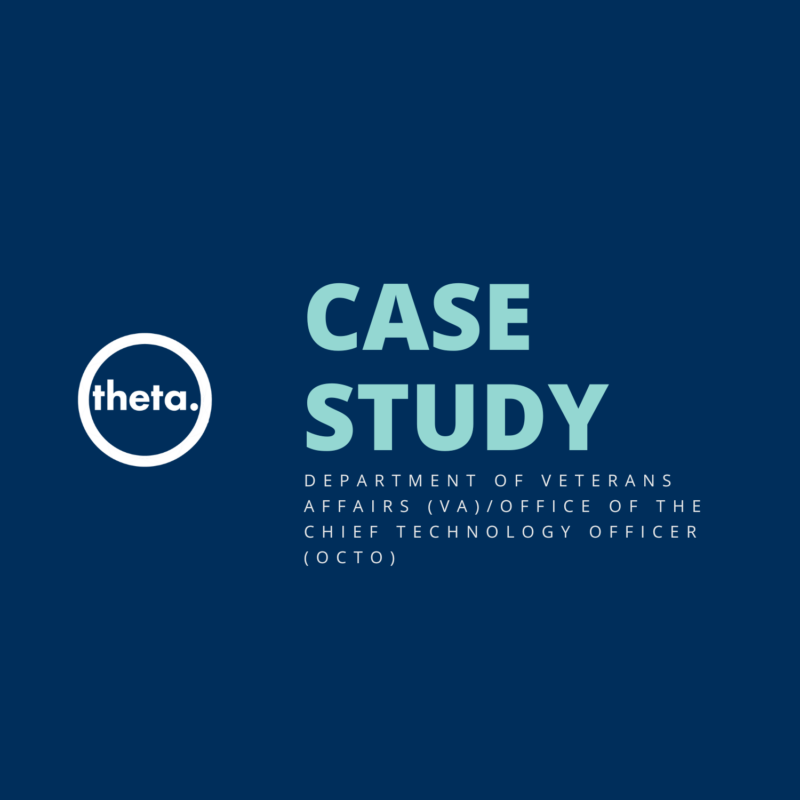
The Department of Veterans Affairs (VA) Office of the Chief Technology Officer (OCTO) is committed to improving the accessibility, reliability, and security of digital services for veterans. Their goal is to reduce the time it takes veterans to locate, utilize, and receive VA services while enhancing the quality of healthcare delivery through faster, more accurate benefits decision-making. However, an inefficient benefit claims processing system led to significant delays and growing backlogs.
The Veterans Benefits Administration (VBA) relied on Veteran Service Representatives (VSRs) to manually retrieve medical information for disability compensation claim decisions. This often required an additional medical exam to create an easily digestible document rather than sifting through extensive medical records. This time-consuming process escalated VBA’s expenditures and extended the claims processing time by over a month. The situation was set to worsen with the expected influx of additional claims due to the passage of “Toxic Exposure” legislation.
The primary challenge is to modernize and streamline the outdated system into a process that can efficiently handle an increasing volume of claims while reducing backlogs and processing times. Furthermore, the solution must ensure data privacy and security, be optimized for mobile access, and guarantee a consistent user experience.
theta. – an SBA-Certified HUBZone digital integration & management firm based in Baltimore, MD, working to create a world where tech works for everybody as a subcontractor, we are actively involved in the mission of expanding the existing Rapid Ready-for-Decision (RRD) product, part of the Automated Benefits Delivery project. The project’s scope was extended to handle additional types of claims, particularly the presumptive cancer claims covered under the PACT Act.
Our team follows a two-pronged approach: Leveraging Human Centered Design principles to understand and cater to the end-user needs and adopting Agile methodologies to promote iterative development and continuous improvement.
Our development efforts are rooted in a robust technical environment that includes a variety of programming languages, tools, and platforms. We use Java and Python for backend development, XSLT, HTML, and Groovy for frontend and scripting tasks. Shell scripting is used for automation and orchestration tasks.
We use GitHub for version control and collaboration. AWS powers our cloud infrastructure, and we use Docker, Helm, and Kubernetes to containerize and orchestrate our applications.
For asynchronous messaging and data streaming, we utilize Apache Kafka and RabbitMQ. JetBrains is our preferred integrated development environment (IDE), and we use Gradle for build automation. Our API development follows best practices to ensure secure and effective data exchange.
We’re also proactive about monitoring our applications, for which we utilize DataDog, to ensure maximum uptime and swiftly handle potential issues.
Our critical tasks include:
Improving claim eligibility assessment: We are contributing to efforts to more accurately identify claims that can be processed swiftly due to the availability of relevant health data.
Automating health data retrieval: We are working to streamline the retrieval of relevant health data from the Veterans Health Information System Technology Architecture (VistA) and the Corporate Data Warehouse (CDW). This eliminates the need for redundant medical exams.
Prototyping and iterating: We are actively building prototypes of promising non-RRD claim automation concepts, testing them, and iterating based on feedback. We are working in sprints to develop solutions until we find viable ones to be scaled to an MVP.
Scaling solutions: After successful prototyping and iterations, we focus on scaling the solutions to handle a broader range of claim types and a higher volume of claims.
Our involvement in this project is ongoing, and our efforts are already enhancing the VA’s ability to process claims more efficiently and accurately. Modern software development practices and the integration of digital systems are improving the user experience, leading to positive feedback from users and stakeholders.
Our iterative approach allows us to continuously refine and improve our solutions, ensuring we consistently reduce the claims backlog and improve the overall efficiency of the VA’s benefits claims process.
The ongoing digital transformation within the VA directly benefits the veterans and empowers the VBA by reducing processing times, optimizing resources, and streamlining their operations. We are proud to be part of this important endeavor and look forward to continuing to deliver impactful solutions.